By Marlan Davis
Photography: Marlan Davis, David Freiburger, and the manufacturers
 
| “In an ongoing attempt to keep emissions as low as possible, manufacturers have been putting tighter and tighter limits on how much phosphorous and zinc additive can be in the motor oil.” — Mark Ferner, Quaker State |
For the last several years, many engine builders and individual hot rodders have experienced a raft of seemingly unexplained flat-tappet camshaft lobe failures. As one engine builder puts it, “I’ve failed more cams in the last three years than I have in the last 30.â€There are several theories as to the primary causes of these failures, and with all the usual finger pointing and blame game such unfortunate episodes inevitably generate, the result has been a muddying of the waters that’s left average builders confused and uncertain as to the best course of action. What’s the real source of the failures and, more importantly, rather than whining over spilled oil, what can be done to minimize the occurrence of these failures?
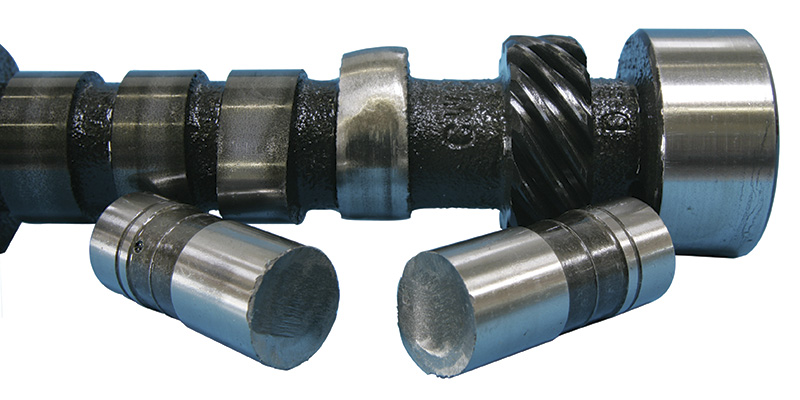
A failed cam lobe can ruin your whole day. Unfortunately, in the last few years, flat-tappet cam failures have been occurring with distressing frequency. There are several contributing factors, but they can be mitigated with the right parts, lubricants, and assembly techniques.
Various parties have blamed camshaft manufacturing quality control, inferior flat-tappet lifters, the aggressiveness of today’s modern cam profiles, and engine oil formulation as the primary factors behind the failures. What we know for sure is that the most serious complaints have cropped up within the last three years or so, around the time that major changes occurred in both the flat-tappet manufacturing industry and in the formulation of passenger car and light-duty truck motor oils.
THE GREAT LIFTER SHORTAGE
New-automobile manufacturers basically call the tune when it comes to supplier capacity and even motor oil composition due to the OEMs’ huge production volumes in comparison with aftermarket requirements. Flat tappets are not used in today’s new cars. All current pushrod engines use roller tappets, while overhead-cam motors use either rolling or sliding tappets. From the standpoint of the traditional lifter-supply companies, five years ago it looked like there was no future in the flat-tappet lifter business — the projected volume was insufficient to justify investing in new tooling and equipment.
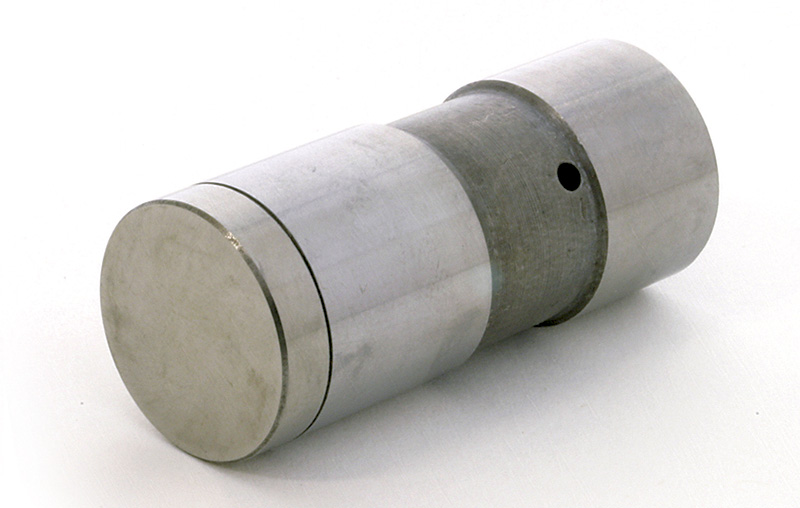
GM’s lifter foot and body are made from dissimilar materials joined by proprietary processes. Identify them by a distinct parting line or discoloration near the bottom of the lifter body. Traditionally pricey Chevy hydraulic lifters were sold individually (GM PN 5232720 or ACDelco PN HL66), but a set of 16 (PN 12371044) is now available from GM performance dealers like Burt Chevrolet at a much more friendly price.
As Survival Motorsports’ Barry Rabotnick puts it, “Go back five years ago and there were a bunch of U.S. companies making flat-tappet lifters — Eaton, Delphi [GM], Stanadyne, and Hylift [Johnson].Within about a three-month window, two out of the four went out of business. Eaton decided it no longer wanted to be in the flat-tappetbusiness — there was no volume — and it sold out to Stanadyne, which initially added no capacity and in fact shut Eaton’s line down. Hylift — the premiere supplier of Johnson lifters to major cam companies as well as aftermarket suppliers such as Federal-Mogul — went through one of those corporate scandals we’ve sadly become all too familiar with before going bankrupt.â€
This led to the flat-tappet lifter shortage the industry experienced several years ago. GM was still in business, but it made lifters primarily for GM products, and they were pricey. As a major OEM supplier, Stanadyne had other fish to fry and initially did not increase its flat-tappet production capacity. Cheap, poorly made offshore lifters flooded in to take up the slack. Most of these inferior lifters had questionable metallurgy, a poor surface finish, and an improper crown radius. But they were affordable and available.
Major cam companies, including Comp and Crane, maintain that they never sacrificed lifter quality or sold inferior lifters. “We figured we were better off selling nothing than selling junk,†says Crane’s Chase Knight. Yet some engine builders insist there was a definite durability difference in lifters produced prior to ’01 compared with some later production runs. At present, GM continues in business with a good lifter, Stanadyne has finally geared up again (it currently has about 70 percent of the lifter market), and Johnson is back in business. But the off-shore stuff still permeates the market, and many engine builders are tempted to use them even on name-brand cams because the price is so low compared to the quality U.S.-made parts. Unfortunately, without lifter disassembly, it’s nearly impossible for the average builder to identify its manufacturer—and, hence, its quality. One exception is genuine GM/ACDelco/Delphi tappets.
REFORMULATED MOTOR OIL

For severe-duty use with mechanical cams, Comp Cams offers an optional solid lifter with a small oil hole in the foot that provides positive lubrication at the cam lobe/lifter contact point. They are available for both 0.842-inch–od GM (PN 800-16, shown) and 0.875-inch–od Ford (PN 817-16) applications.
Around the time of the flat-tappet lifter shortage, motor oil was experiencing its own changes. Engines with flat-tappet cams have extremely high pressure loading at the contact point between the lifter crown and the cam lobe. According to Mark Ferner, team leader for Quaker State Motor Oil Research and Development, “Even stock passenger cars can see pressure in excess of 200,000 psi at the point of flat-tappet/cam lobe contact.†To prevent excess wear, traditional motor oil included a generous dose of Anti-wear additives, primarily zinc dialkyl dithiophosphate (ZDDP). “The chemistry is such that the additive is a combination of zinc and phosphorous,†says Rockett RacingFuel’s Tim Wusz. “Typically the phosphate amounts are about 75 percent of the zinc amounts. For example, if there was 0.100 percent zinc by weight in the motor oil, then the phosphate is about 0.075.â€
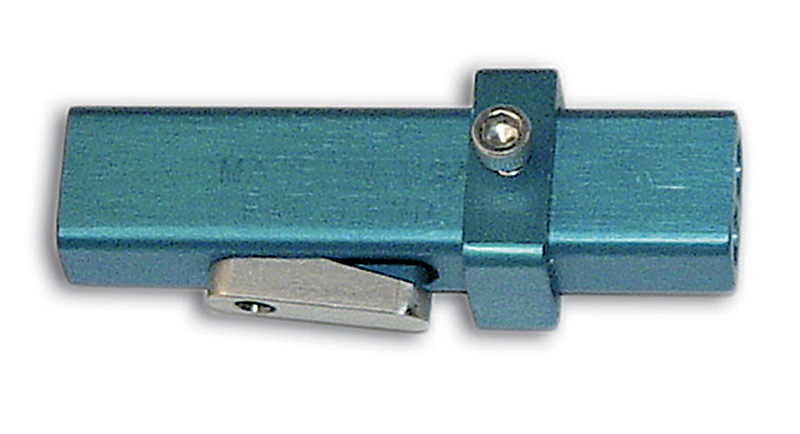
If building up a bare block, the ultimate solution is to cut a 0.009-0.012-inch-deep lubrication groove in the lifter bore. Comp Cams sells this handy lifter bore grooving tool. Individual kits work for the 0.842 Chevy (PN 5003), 0.875 Ford(PN 5005), and 0.904 AMC/Chrysler (PN 5007). Combo kit PN 5001 does both Chevy and Ford; PN 5010 does all three.
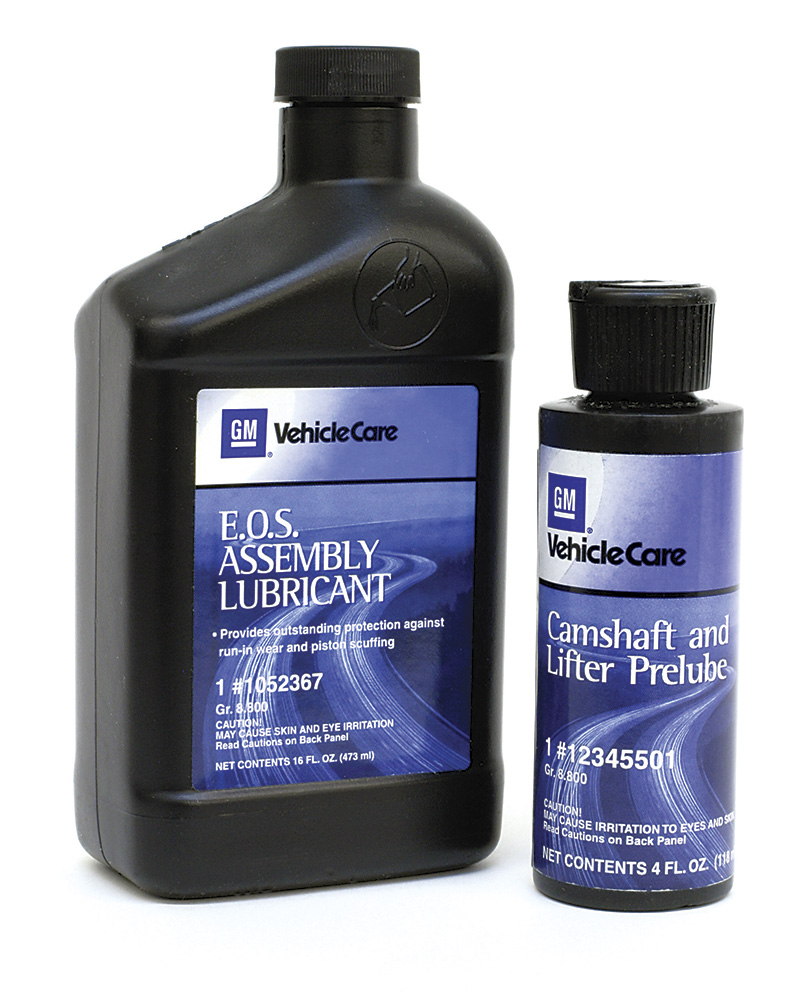
GM EOS assembly lubricant (PN 1052367), currently sold in a 16-ounce plastic bottle, is an excellent concentrate for breaking in a new cam. Your favorite cam company should offer a similar product. If running API SM/GF-4 street oils, consider adding a 4-ounce bottle of GM camshaft and lifter prelube (PN 12345501) at every oil change to protect in-service flat tappets.
Ferner adds,“The zinc reacts with the cam lobe’s iron surface. That creates a sacrificial chemical coating strong enough to keep parts separated to reduce the wear.†Although great for keeping a flat tappet alive, as an engine ages and develops blow-by, some of the additives flow out the exhaust where they can degrade oxygen sensor and catalytic converter performance. Faced with ever more stringent emissions standards and the governmental mandate for extended emissions-control system warranties, the OEMs got together with the motor oil makers and decided to reduce the amount of ZDDP in street-legal, gasoline-engine motor oils. After all, they weren’t needed with modern roller lifters and overhead-cam followers. The reduction first started in the mid-’80s, and it has been a gradual process, but the latest API SM and GF-4 specs have reduced ZDDP content to such an extent that the new oils may not provide adequate protection for older, flat-tappet-equipped vehicles running nonstock, performance cams and valvetrains. And it will only get worse; projected future oil spec revisions will likely reduce ZDDP content even more.
CAM QUALITY CONTROL
Motor oil industry sources maintain that even with their significantly reduced anti-wear additive content, the new oils still pass standard industry tests that measure valvetrain wear (including with flat tappets). But cam grinders counter that the type of heat-treat used on the reference test cams was atypical of standard industry practice. Who’s right on this one is hard to determine. The overwhelming majority of industry flat-tappet cam blanks are made by two big independent factories in Michigan. In other words, just about everyone’s flat-tappet cam blanks are, says Rabotnick, “…cast in the same place, and the hardening for them is all done in the same place. A cam blank doesn’t know whether it’ll be any specific blank; the various cam grinders merely put the finished lobes on the already hardened blank. In fact, for high-volume cams, some cam companies may outsource the entire production of the cam to one of these two big factories.†Since these factories have been making cams to OEM quality standards for years, and they supply the cores for just about everyone, it’s hard to accept that they would be putting the wrong heat-treat on them, or that the standard test would use a weird heat-treat not supported by mainstream core manufacturers.
Cam company insiders do allow that in recent years the major cam companies have tightened up their tolerance standards, revised their heat-treat specs to conform to the latest industry practice, and even changed the lobe taper to ease critical cam break-in. The new tapers help the lifters rotate easier at the possible expense of slightly shortened life over 100,000 miles. Comp Cams says it has done “a tremendous amount of work†improving the Parkerized finish of the cam and lifters. According to Billy Godbold, Comp has improved control over the acids used in the process and reduced the grain size of the phosphate crystal structure. “This better spreads the load and improves the resulting finish while still leaving extra phosphates for the surface.â€
The argument has also been made that today’s cutting-edge cam profiles are more aggressive than those of 20 or even 10 years ago. Just as profiles got more aggressive, lifters went south and motor oil was reformulated. Something had to give. This argument is disputed by Comp’s Godbold, who points out, “Cams fail top-down, not bottom-up,†meaning that the more aggressive profiles actually allow a larger nose radius, reducing overall loading. “We have less cam failure on the Xtreme Energy line than on the old Magnums,†Godbold maintains. On the other hand, because the profiles are more aggressive, many builders are using higher spring loads than the previous norm, then failing to break in the cam on the outer springs only.
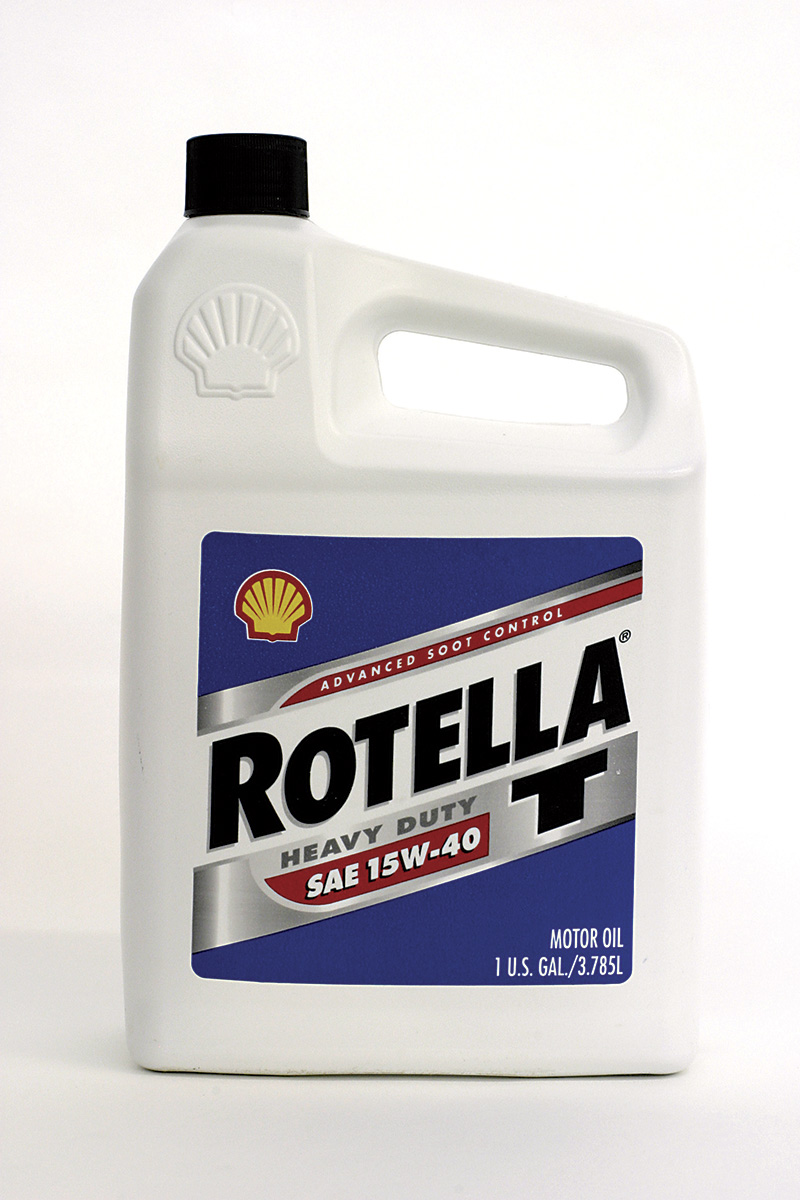
Available at truck stops, Wal-Mart, and major auto parts stores, Shell Rotella T oils as of ’06 still have plenty of ZDDP additives. Although officially marketed for big 18-wheel trucks and construction equipment, Shell’s Dan Arcy says, “Other than viscosity differences and possible catalytic converter issues, there is no reason not to run Rotella in your gasoline-fueled car.â€
My opinion is that cams from reputable manufacturers never sacrificed quality; however, today’s production from major manufacturers is by necessity improved from that of five years ago in an attempt to crutch the cams’ inevitable use with reformulated motor oils and offshore lifters.
OTHER FACTORS
Rabotnick mentions yet another possible contributing factor: “Many daily-use or street/strip hot rod engines are built up from 35-to-40-year-old engine blocks. The average builder never checks the lifter-body-to-lifter-bore clearance. It may have doubled. Pro guys bush the lifter bores, but most home builders just dust the bore with a brake hone to make the bore smoother and remove varnish. If there’s more than 0.001-0.0015-inch clearance, you could be in trouble.†But Comp’s Godbold counters, “We see the same type [of] problems whether it’s a brand-new CNC-machined Dart block or a junkyard block.â€
What may actually be contributing to this perceived block problem is the way engines are currently built. As Comp’s Scooter Brothers points out, “Most performance engines today use windage trays, limit oiling to the top of the engine, modify rod side-clearance for less splash oil, and use special oil pans. This has greatly reduced the oil film at the camshaft/lifter interface.â€
WHAT TO DO ABOUT IT
Obviously the ultimate solution to flat-tappet failure problems is to not use a flat tappet—just move up to a roller camshaft. But due to financial and/or specific racing body rules limitations, that is not always possible. On the extreme high end, NASCAR Nextel Cup engine builders use their own exotic custom tool-steel cam billets and $1,200 tappets, but that stuff is way beyond the average shop. What’s the average engine builder to do?
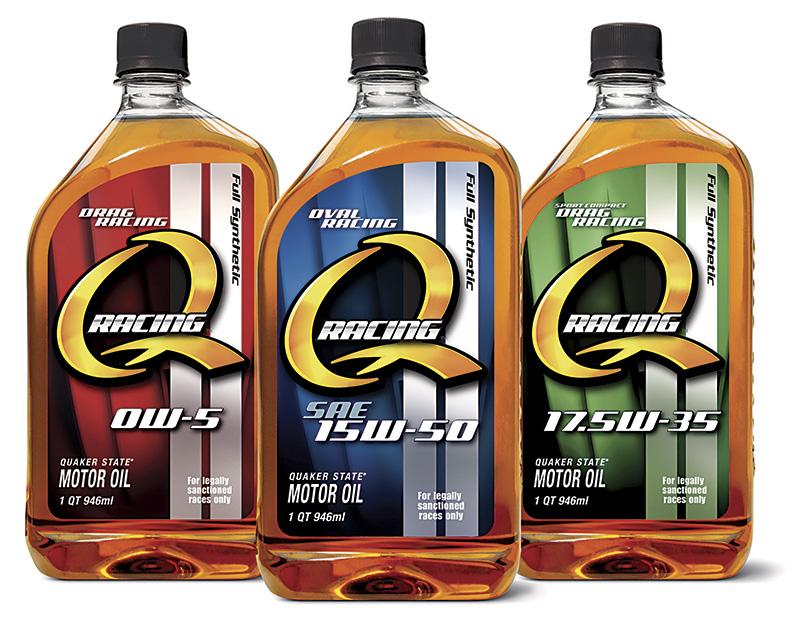
Available through selected distributors, Quaker State’s line of Q-Racing, full-synthetic oils is one example of a product that has all the necessary antiwear additives and friction modifiers and is specifically formulated to keep extreme performance engines alive. Race oils like these are officially marketed for vehicles used in legally sanctioned races only and don’t meet new car warranty requirements.
If you are building up the engine from scratch and intend to run flat tappets, adjust your build specs and technique accordingly. Don’t excessively restrict oil to the lifter galleys, check and maintain proper tappet-bore clearance, and consider grooving the lifter bores for increased lubrication (Comp has a special tool for this). Where offered, use beehive springs in place of traditional heavy-duty dual springs. “With the beehives, you get better control with less load,†says Godbold. Above all, avoid no-name, brown-bag, offshore lifters like the plague. True, they’re much less expensive, but you get what you pay for.
We can say with reasonable confidence that all major cam companies are currently supplying quality lifters with their cams. For GM guys, there’s also the real GM or ACDelco solution.
When it comes time to fire up an engine with a new cam, do not skimp on proper break-in procedure. Put moly lube on the lobes during installation and pour a can of break-in prelube into the oil pan in all cases. Any engine with more than 300 pounds of open spring pressure or 170 pounds of seat pressure (as multiplied by the rocker ratio) should be run in on the outer springs only.
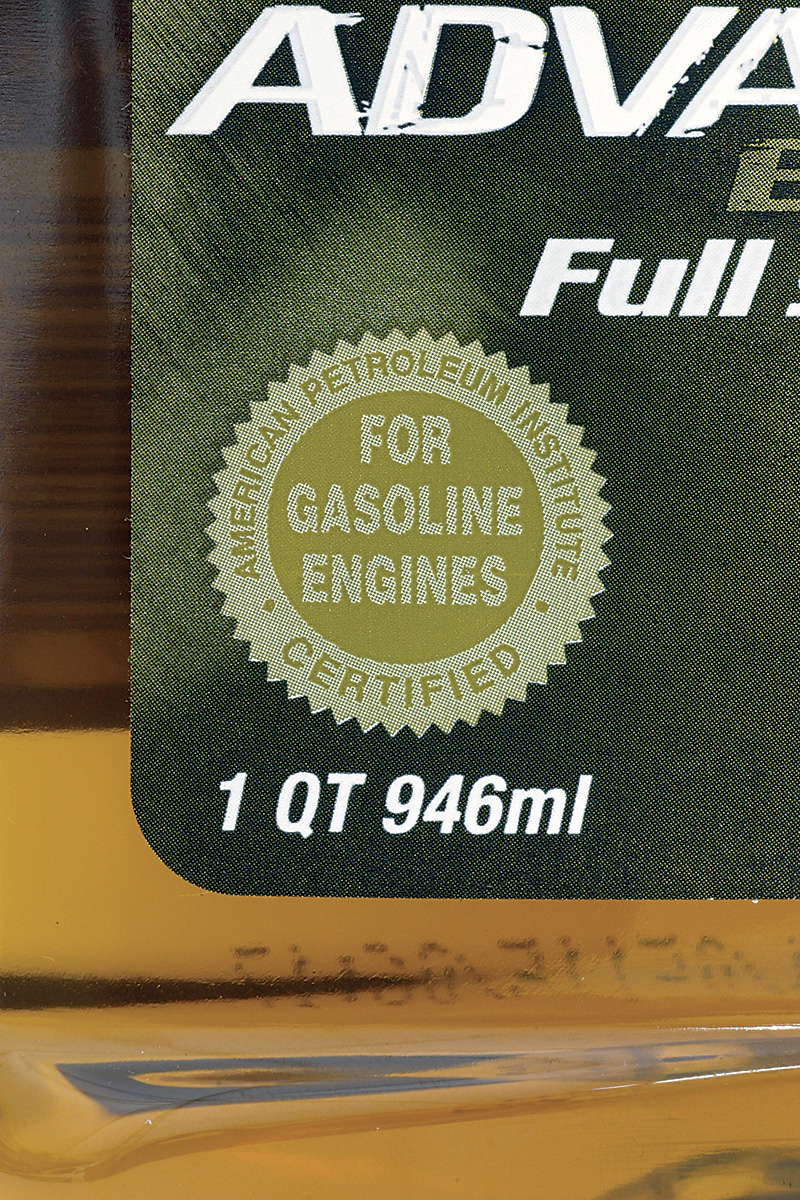
You’ll see this starburst symbol on the latest API ILSAC GF-4 street-legal, energy-saving oils. It means they meet all the latest industry oil specs, fully satisfy emissions requirements, and fulfill all the new car manufacturer warranty requirements. But it also indicates seriously reduced ZDDP content, which can cause problems with high-performance flat tappets.
For in-service engines, consider running cam and lifter prelube in the oil all the time, not just during break-in. Another alternative is to use heavy-truck diesel-oil, which is formulated for 18-wheelers and at present still has a full complement of traditional anti-wear additives that have been significantly reduced in today’s street-legal passenger car oils. (Though even diesel oils will start reducing zinc content in 2007 as big rigs gear up to receive catalytic converters.) Comp Cams swears by Shell Rotella T diesel oil for use in high-performance street cars. It’s available in both mineral-based and full-synthetic formulations with both types containing basically the same superior additive package. Rotella viscosities are generally higher than today’s modern formulations, but that’s not a detriment for classic musclecars. Diesel oils also add a superior detergent package that can keep the piston rings cleaner for better oil consumption control. The drawback, if any, would be on a high-mileage engine where blow-by can cause detergent to accumulate in the combustion chamber, possibly contributing to detonation.
Even better than diesel oil are specially formulated racing motor oils. Although the most expensive solution, these oils may contain more anti-wear additives than diesel truck oil as well as other performance-enhancing ingredients specifically designed for hardcore, high-performance gasoline-engine usage.
Dan Arcy, technical marketing manager for Shell Lubricants, also takes issue with the importance of friction modifiers, which he says “…are only present in the very low viscosity GF-4 oils for fuel economy reasons.â€
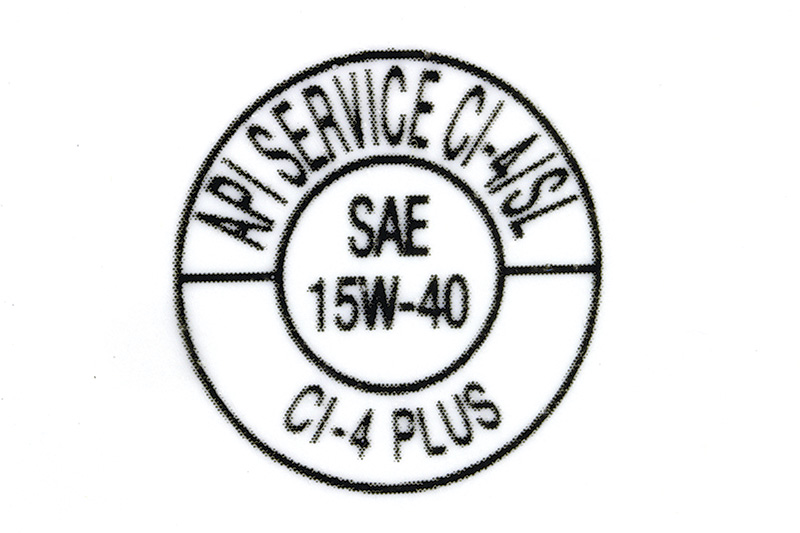
Modern heavy-duty truck diesel oils with lots of ZDDP additives will be marked “CI-4†or “CI-4 Plus.†They also easily pass the API Service SL gasoline engine performance test (but due to the high ZDDP content, not the SL chemical composition specs). Such truck oils are an economical and effective solution for flat-tappet longevity, according to many sources.
At any rate, because they have a full load of anti-wear additives, today’s real racing motor oils are sometimes marked “for off-highway use only†on the bottle. They definitely aren’t embossed with the consumer-friendly starburst insignia. Such racing oils won’t meet manufacturer’s warranty requirements for new vehicles, may degrade catalytic converter performance in long-term use and, in some cases, have not been formally submitted to the oil industry’s current benchmark performance test and validation procedure. But for older cars running flat tappets, they are the best oils available.
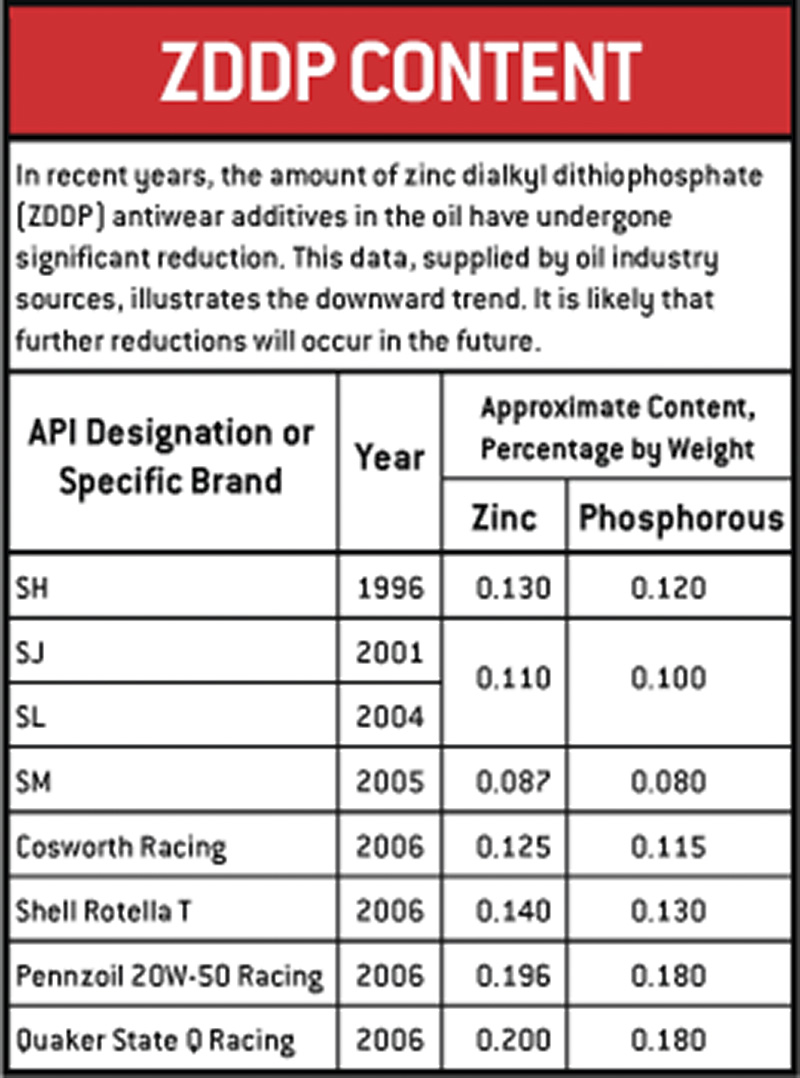
“I have never seen a 10-year-old cam that would pass today’s quality standards. The quality of the finish and grind accuracy is far better than what we could hold even five years ago.†—Billy Godbold, Comp Cams
If you make provisions to adequately lubricate the lifter/lobe interface, use only quality lifters, fill the sump with diesel or racing motor oils, and follow proper break-in procedure, any flat-tappet cam failures should be minimized. It’s a lot more effort than we’ve become accustomed to, but if your customer still wants to run a high-performance flat-tappet cam, it’s something you’ll just have to get used to doing.
Available through selected distributors, Quaker State’s line of Q-Racing, full-synthetic oils is one example of a product that has all the necessary anti-wear additives and friction modifiers and is specifically formulated to keep extreme performance engines alive. Race oils like these are officially marketed for vehicles used in legally sanctioned races only and don’t meet new-car warranty requirements.
You’ll see this starburst symbol on the latest API ILSAC GF-4 street-legal, energy-saving oils. It means they meet all the latest industry oil specs, fully satisfy emissions requirements, and fulfill all the new-car manufacturer warranty requirements. But it also indicates seriously reduced ZDDP content, which can cause problems with high-performance flat tappets.
Modern heavy-duty truck diesel oils with lots of ZDDP additives will be marked “CI-4†or “CI-4 Plus.†They also easily pass the API Service SL gasoline-engine performance test (but due to the high ZDDP content, not the SL chemical composition specs). Such truck oils are an economical and effective solution for flat-tappet longevity, according to many sources.
Sources:
ACDelco; Grand Blanc; MI; 800/ACDelco; www.acdelco.comAmerican Petroleum Institute; Washington, DC; 202/682-8000; https://api-ec.api.org
Burt Chevrolet; Englewood, CO; 800/345-5744; www.burt.com
Comp Cams; Memphis, TN; 800/999-0853 or 901/795-2400; www.compcams.com
Cosworth Inc.; Shelton, CT; 800/355-5880 or 203/271-4567; www.liquidcosworth.com
Crane Cams Inc.; Daytona Beach, FL; 386/258-6174; www.cranecams.com
GM Performance Parts; Grand Blanc, MI; 800/577-6888 for nearest dealer; www.gmgoodwrench.com/gmgoodwrenchjsp/perfparts/home.jsp
PENNZOIL; Houston, TX; 800/990-9811; www.pennzoil.com
Quaker State; Houston, TX; 800/458-4998 (motor oil tech-line) or 800/695-7797 (racing lubricants dealer locator); http://www.qpowerinc.com/ or www.quakerstate.com
Rockett Brand Racing Fuel; Glenview, IL; 800/345-0076; rockettbrand.com
Shell LUBRICANTS; Houston, TX; 800/64LUBES; www.rotella.com
Stanadyne Precision Engine Products Corp.; Tallahassee, FL; 850/575-8181; www.stanadyne.com
Survival Motorsports; Walled Lake, MI; 248/438-6900; www.survivalmotorsports.com




0 Comments